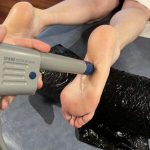In-Depth Analysis of Plantar Fasciitis: Causes, Symptoms, and Proven Treatment Solutions
Understanding Plantar Fasciitis: A Closer Look at This Widespread Foot Disorder
Plantar fasciitis is a prevalent foot ailment that affects millions of people worldwide, often resulting in significant pain and restrictions in everyday activities. This condition predominantly affects active individuals aged 25 to 65, and is characterized by persistent pain in the heel area. It develops when the plantar fascia, a robust band of connective tissue on the sole of the foot that supports the arch, becomes overstretched or strained. Factors such as high-impact activities, long periods of standing, or improper footwear can contribute to a loss of flexibility and strength in the plantar fascia, leading to inflammation and intense pain, especially around the heel. By comprehending the intricacies of plantar fasciitis, individuals can pursue effective relief strategies and regain their ability to partake in daily routines with less discomfort.
Essential Diagnostic Procedures for Confirming Plantar Fasciitis
Comprehensive Steps for Accurate Diagnosis of Plantar Fasciitis
To achieve a definitive diagnosis of plantar fasciitis, a thorough physical examination by a healthcare professional is imperative. During this meticulous evaluation, the healthcare provider will inquire about your specific symptoms and inspect your feet for any visual indicators of distress. They may gently palpate the plantar fascia to measure inflammation and assess your pain response. It’s essential to convey the details of your discomfort, including when and where the pain peaks during your daily activities. While plantar fasciitis is often diagnosed based on clinical findings alone, if a different underlying issue is suspected, your doctor may suggest imaging tests, such as X-rays, to exclude other potential causes of foot pain.

Identifying the Key Symptoms of Plantar Fasciitis
The manifestations of plantar fasciitis can either develop incrementally or appear suddenly, particularly following intense physical exertion. Timely identification of these symptoms is essential for effective intervention and treatment. The severity and duration of symptoms may vary widely between individuals. The hallmark symptom is localized pain in the foot's sole near the heel, which may present as a dull ache or a sharp, stabbing sensation. Additionally, discomfort in the arch of the foot can occur, often described as a burning feeling. Many individuals report experiencing heightened pain upon waking or after lengthy periods of inactivity, frequently coupled with stiffness that tends to diminish after a few moments of walking. Other prevalent symptoms include increased pain following physical activities, tenderness under pressure, and noticeable stiffness in the foot, particularly after extended periods of sitting or sleeping.
Diving into the Root Causes of Plantar Fasciitis
Plantar fasciitis occurs when the plantar fascia, a thick band of tissue on the foot's underside, is overstressed or subjected to undue strain from repetitive activities such as prolonged standing or running. This condition may also correlate with sudden weight gain, a common occurrence during pregnancy. Continuous tension on the plantar fascia can result in chronic degeneration or micro-tears in the fascial fibers, particularly at the point where the fascia attaches to the heel bone, known as the calcaneus. These micro-tears can incite pain and inflammation, significantly hindering mobility and daily life activities. Advanced imaging methods, including ultrasonography, can highlight thickening and calcification of the plantar fascia, indicating more severe forms of this painful condition.
Understanding the Risk Factors That Heighten the Likelihood of Plantar Fasciitis
- Foot arch irregularities, including both flat feet and high arches.
- Long-distance runners or those who frequently jog on downhill or uneven terrains.
- Being overweight or experiencing rapid weight fluctuations.
- A tight or overstretched Achilles tendon.
- Wearing inadequate footwear that lacks proper arch support or has overly soft soles.
- Sudden increases in physical activity levels or intensity.
Key Steps for Attaining an Accurate Diagnosis of Plantar Fasciitis
If you suspect you are experiencing plantar fasciitis or ongoing foot pain, seeking a thorough diagnosis and tailored treatment plan from your healthcare provider is crucial. Early diagnosis can significantly enhance comfort and improve overall quality of life. Your physician will perform a detailed examination of your foot, looking for specific symptoms or risk factors linked to plantar fasciitis. This examination will include assessing areas of tenderness beneath the heel, evaluating your foot arch type, and checking for limited dorsiflexion, the upward movement of the ankle.
In addition to a comprehensive physical examination of your foot, your healthcare provider may recommend imaging studies like X-rays or ultrasound if other conditions, such as heel spurs or arthritis, are suspected. These imaging techniques help visualize the plantar fascia, revealing signs of thickening or inflammation, common indicators of this condition. Should conservative treatment methods fail to alleviate your pain, your doctor might suggest advanced imaging options like magnetic resonance imaging (MRI) to explore further potential issues.
Evaluating Various Effective Treatment Options for Plantar Fasciitis
Most individuals diagnosed with plantar fasciitis can expect to recover within nine to twelve months after beginning non-surgical treatment strategies. It’s essential to acknowledge that the success of these treatments may vary according to the individual’s specific condition and compliance with the prescribed regimen.
Common Non-Surgical Treatment Options Include:
Rest. The most crucial initial step in managing plantar fasciitis is to refrain from activities that exacerbate the pain. Allowing the plantar fascia adequate time to heal is vital. During this recovery phase, consider engaging in low-impact exercises such as cycling or swimming, which impose significantly less stress on your feet compared to activities like walking or running.
Ice. Applying ice to the affected area can effectively reduce inflammation and mitigate pain. Utilize a cold water bottle or an ice pack on the painful region for 15 to 20 minutes three times a day, particularly after activities that exacerbate your discomfort, to provide significant relief.
Stretching. Tightness in the foot and calf muscles can exacerbate the symptoms of plantar fasciitis. Incorporating targeted stretching exercises into your daily routine can help elongate these muscles, thereby alleviating strain on the plantar fascia.
Night splints. Wearing night splints can gently stretch the plantar fascia while you sleep, preventing it from tightening overnight and minimizing morning stiffness and pain. Although it may take some time to get used to wearing a splint, many individuals report substantial relief from heel pain as a result.
Footwear choices. Selecting supportive footwear that offers adequate cushioning and arch support is crucial for alleviating plantar fasciitis pain. Avoid wearing shoes that lack proper support or those that are excessively worn out. If pain persists, consult your doctor about custom orthotics designed to provide additional support tailored to your unique foot structure.
Physical therapy. Your healthcare provider may recommend a structured exercise program with a physiotherapist. This program could focus on stretching the calf muscles and implementing specific plantar fascia therapy. Additionally, physical therapy may involve cold treatments, massage, and other therapeutic modalities aimed at reducing inflammation in the plantar fascia.
Nonsteroidal anti-inflammatory medications (NSAIDs). Over-the-counter NSAIDs, like ibuprofen, can help alleviate pain and inflammation. However, it is vital to use these medications under the guidance of a healthcare professional and for a limited duration to prevent potential side effects.
If Conservative Treatments Are Ineffective, Your Doctor May Recommend:
A walking boot and crutches. These assistive devices may be prescribed temporarily to allow sufficient rest for your foot.
Corticosteroid injections. For severe pain and inflammation unresponsive to conservative methods, corticosteroid injections may be employed. While these injections can offer temporary relief, they are typically administered cautiously due to the risk of weakening the plantar fascia and potential complications.
Extracorporeal shockwave therapy (ESWT) is another non-invasive treatment option that utilizes high-energy shock waves aimed at fostering healing in the plantar fascia. However, this treatment may not be appropriate for all patients.
Botulinum toxin injections utilize a protein derived from the bacteria Clostridium botulinum, which can help relax the tissue surrounding the plantar fascia, thereby alleviating pain.
Dry needling is a technique employing a sterilized needle to stimulate myofascial trigger points in the affected area. While the effectiveness of dry needling for plantar fasciitis remains debated, some studies indicate it may help decrease pain severity.
Low-level laser therapy. Your healthcare provider may consider this option to mitigate pain and inflammation associated with plantar fasciitis. Research suggests that this therapy can provide relief from heel pain for several months.
Surgery is viewed as a last resort for individuals who do not respond to non-surgical treatments. Although surgery may provide relief, it carries inherent risks and the potential for chronic pain.

Choosing the Right Footwear for Optimal Management of Plantar Fasciitis
Selecting appropriate footwear is paramount for effectively managing plantar fasciitis. Wearing the right shoes can substantially lower the risk of developing or worsening this painful condition.
When searching for shoes that are beneficial for plantar fasciitis, focus on the following essential features:
Arch support. Adequate arch support aids in distributing weight evenly across the foot, thereby alleviating pressure on the plantar fascia and minimizing discomfort during activities.
Cushioning. Footwear with substantial cushioning in the arch and forefoot areas helps absorb shock and reduce strain on the plantar fascia, making each step more comfortable.
Heel support. Look for shoes with a firm heel counter, as the heel sustains significant impact upon landing, which can contribute to microtrauma in the fascia. Soft silicone heel cushions can offer additional support and comfort.
Shock absorption. Opt for shoes that feature excellent shock-absorbing capabilities, particularly in the heel area. Cushioned soles or gel insoles can enhance shock absorption, further safeguarding the plantar fascia from damage.
It is advisable to consult with a podiatrist or orthopedic specialist for recommendations tailored to your unique foot structure and the severity of your plantar fasciitis. Additionally, consider custom-made or over-the-counter orthotic inserts that can help evenly distribute pressure across your feet, reducing pain and discomfort.
Implementing Effective Stretching Exercises for Relief from Plantar Fasciitis Symptoms
Research indicates that specific stretching exercises targeting plantar fasciitis can significantly assist in pain relief as part of a comprehensive treatment plan. Notably, a study highlighted that participants who followed regular stretching routines for eight weeks experienced an impressive 52% reduction in heel discomfort. Maintaining flexibility in the calf muscles is crucial for preventing the development of plantar fasciitis.
To maximize your stretching routine, aim to perform these exercises three times daily: in the morning, before lunch, and prior to bedtime.
Calf stretch. Stand facing a wall, keeping one leg straight behind you with the heel flat on the ground. Bend the other knee and lean forward, driving your hips toward the wall. You should feel a stretch in the calf of the straight leg. Maintain this position for 15 to 30 seconds, then switch legs.
Plantar fascia stretch. While seated, place one foot flat on the ground. Lift your other leg and position your ankle across your knee in a figure-four posture. Grasp the toes of the elevated foot and gently pull them back towards you, feeling a stretch in the sole of your foot. Use your other hand to lightly massage the stretched area. Hold for 10 seconds and repeat this stretch ten times on each foot.
It’s vital to remember that while these exercises can be beneficial, they should not supplant professional medical advice from your healthcare provider or other qualified practitioners. Always consult your doctor for personalized guidance and treatment options.
The post Plantar Fasciitis – Identifying Effective Treatments appeared first on MCR Therapies.
The Article Plantar Fasciitis: Discovering Effective Treatment Options appeared first on https://mcrtherapies.com
The Article Plantar Fasciitis Treatment: Explore Effective Solutions Was Found On https://limitsofstrategy.com


This analysis of plantar fasciitis resonates with me, especially as someone who has navigated the challenges of this condition. The emphasis on footwear choices is particularly relevant; I found that switching to shoes with proper arch support made a significant difference in managing my symptoms. It’s interesting how often the little things, like our daily habits and choices, can have such a profound impact on our health.